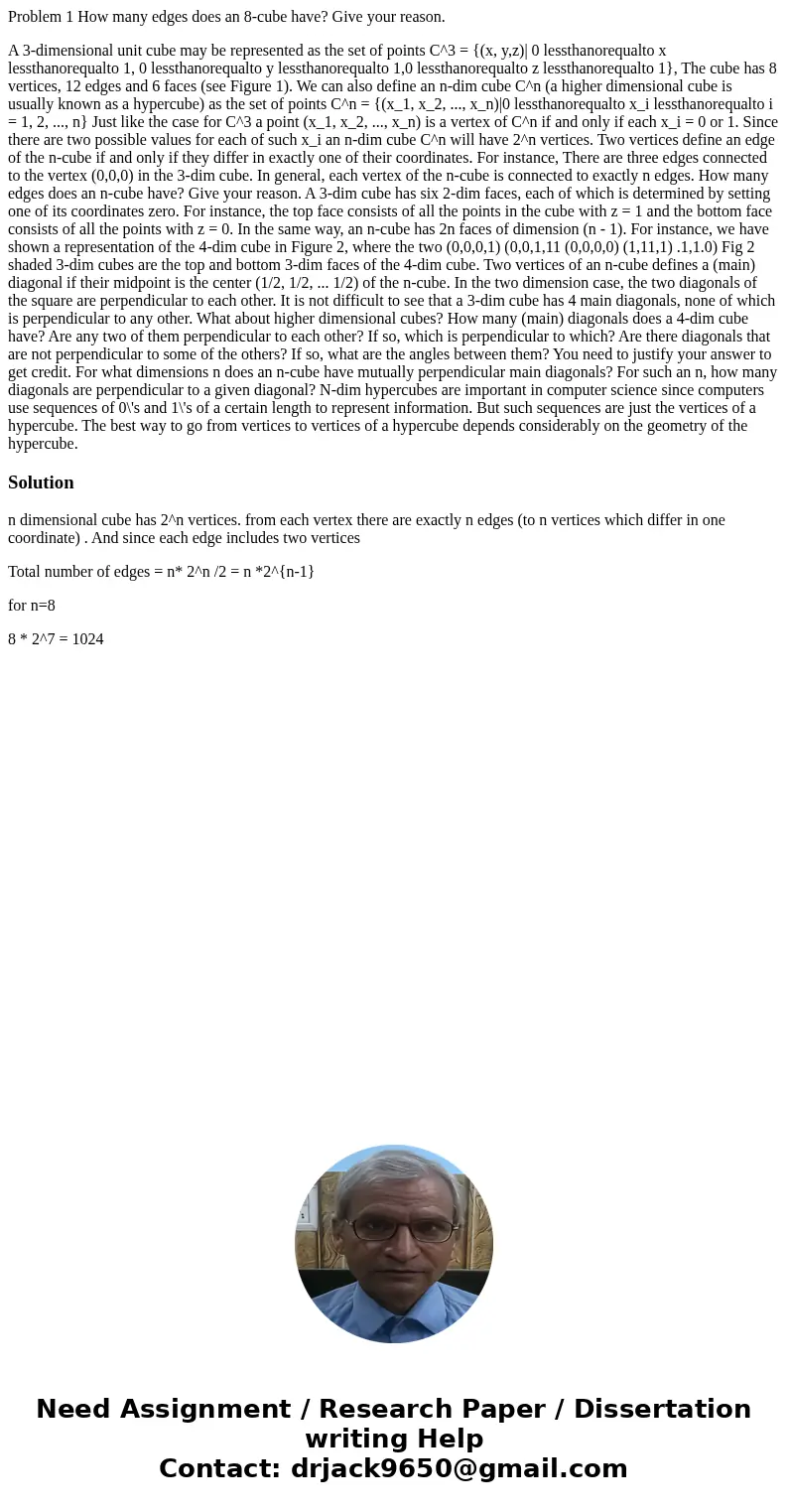Problem 1 How many edges does an 8cube have Give your reason
Problem 1 How many edges does an 8-cube have? Give your reason.
A 3-dimensional unit cube may be represented as the set of points C^3 = {(x, y,z)| 0 lessthanorequalto x lessthanorequalto 1, 0 lessthanorequalto y lessthanorequalto 1,0 lessthanorequalto z lessthanorequalto 1}, The cube has 8 vertices, 12 edges and 6 faces (see Figure 1). We can also define an n-dim cube C^n (a higher dimensional cube is usually known as a hypercube) as the set of points C^n = {(x_1, x_2, ..., x_n)|0 lessthanorequalto x_i lessthanorequalto i = 1, 2, ..., n} Just like the case for C^3 a point (x_1, x_2, ..., x_n) is a vertex of C^n if and only if each x_i = 0 or 1. Since there are two possible values for each of such x_i an n-dim cube C^n will have 2^n vertices. Two vertices define an edge of the n-cube if and only if they differ in exactly one of their coordinates. For instance, There are three edges connected to the vertex (0,0,0) in the 3-dim cube. In general, each vertex of the n-cube is connected to exactly n edges. How many edges does an n-cube have? Give your reason. A 3-dim cube has six 2-dim faces, each of which is determined by setting one of its coordinates zero. For instance, the top face consists of all the points in the cube with z = 1 and the bottom face consists of all the points with z = 0. In the same way, an n-cube has 2n faces of dimension (n - 1). For instance, we have shown a representation of the 4-dim cube in Figure 2, where the two (0,0,0,1) (0,0,1,11 (0,0,0,0) (1,11,1) .1,1.0) Fig 2 shaded 3-dim cubes are the top and bottom 3-dim faces of the 4-dim cube. Two vertices of an n-cube defines a (main) diagonal if their midpoint is the center (1/2, 1/2, ... 1/2) of the n-cube. In the two dimension case, the two diagonals of the square are perpendicular to each other. It is not difficult to see that a 3-dim cube has 4 main diagonals, none of which is perpendicular to any other. What about higher dimensional cubes? How many (main) diagonals does a 4-dim cube have? Are any two of them perpendicular to each other? If so, which is perpendicular to which? Are there diagonals that are not perpendicular to some of the others? If so, what are the angles between them? You need to justify your answer to get credit. For what dimensions n does an n-cube have mutually perpendicular main diagonals? For such an n, how many diagonals are perpendicular to a given diagonal? N-dim hypercubes are important in computer science since computers use sequences of 0\'s and 1\'s of a certain length to represent information. But such sequences are just the vertices of a hypercube. The best way to go from vertices to vertices of a hypercube depends considerably on the geometry of the hypercube.Solution
n dimensional cube has 2^n vertices. from each vertex there are exactly n edges (to n vertices which differ in one coordinate) . And since each edge includes two vertices
Total number of edges = n* 2^n /2 = n *2^{n-1}
for n=8
8 * 2^7 = 1024

 Homework Sourse
Homework Sourse